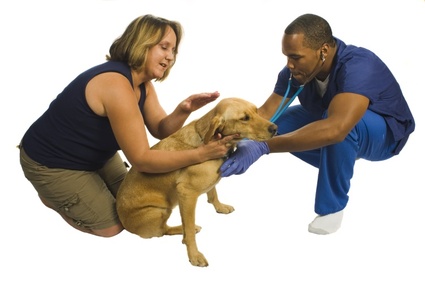About Dogs Ear Infections Symptoms And Treatments
Dogs ear infections can trigger some very unpleasant symptoms for our pets and dog owners need to be very wary of the problems which can be caused by bacterial or yeast infection, allergies or foreign objects working their way into the ear canal.
Canine Ear Infections
Fleas, mites and other parasites in dogs can lead to the ears becoming infected and bacterial infections can lead to some very serious symptoms. The first and most obvious thing to look out for is a reddening of the inner ear area.

The other warning sign is if the ear starts discharging pus or fluid. Make sure you regularly inspect your dogs ears so that any problems can be caught at an early stage.
Areas of skin becoming red and sore is a warning sign whenever they occur but if the infection extends into the inner ear than the dog could be in danger of losing its hearing.
If the inner ear does become affected the dog will develop a high temperature and may have problems with his balance. If this happens swift treatment is required because the infection could cause the ear drum to rupture which will lead to deafness.
Treatment is usually by ear drops if the ear drum is still intact. However, other avenues will have to be explored if the ear drum has been ruptured as drops could cause the dog to suffer coordination and balance problems.
Other Dogs Ear Infections
If your dog starts carrying its head to one side it may be an indication that some kind of foreign object has worked its way into the ear. This could be anything from a small piece of dirt to a grass seed.
Of course, whatever the object is it needs to be removed, and the vet may be able to do this quite easily. Sometimes though the dog may need to be anaesthetised as the ear needs to be kept as still as possible.
Dogs are susceptible to allergies and these can affect the ear. The ears becoming inflamed is often the first sign that a dog has allergy problems and that tests need to be done to determine the root cause of the problems. For more information see our pages on dogs skin allergies.
Hematoma
An aural hematoma can occur when dogs ear infections lead to burst blood vessels in the ear flaps. When the blood vessels burst it causes a large blister, or hematoma, to form inside the ear flap. This blistered lump of skin needs to be drained and may need to be surgically removed.
Protecting Your Dogs Ears
As we mentioned earlier a regular inspection of your dogs ears should be part of the routine checks you perform on your pet. Just a quick look inside the ears when you are having some chill out time with your dog is sufficient.
If your dog is prone to attracting dirt into its lug holes you can help him out by using one of the approved ear cleansers that are available from vets and pet stores.
It’s a quick job and easy to do - just remember to wipe away any the remnants of any debris that the cleaner picks up with cotton wool.
Dog Ear Cleaning
Your dog’s ear is more L-shaped than yours, and debris loves to collect at the corner of the L. To remove this debris, fill your dog’s ear canal with a good ear cleaner. Ear cleaners should be slightly acidic but should NOT sting. Massage the base of the ear for 20-30 seconds to soften and release the debris. Wipe out the loose debris and excess fluid with a cotton ball. Repeat this procedure until you see no more debris. Depending on your dog’s ear condition, you may have to start out doing this twice a day.
Cotton applicator swabs can be used to clean the inside of the earflap and the part of the ear canal you can see. They should NOT be used farther down in the ear canal since that tends to pack debris in the ear canal, rather than removing it.
Some ear problems are so painful, the dog must be anesthetized to do a good job of cleaning the ears. You may find your dog does not like to have his ears cleaned because it is uncomfortable. Talking to him during the process, stopping momentarily to give him a treat if he is doing well (we do not want to reward fussiness!) and doing something fun afterwards may all help.
After the ear is clean, let the dog shake his head and allow some time for the ears to dry. Then you can apply any ear medication that was prescribed.